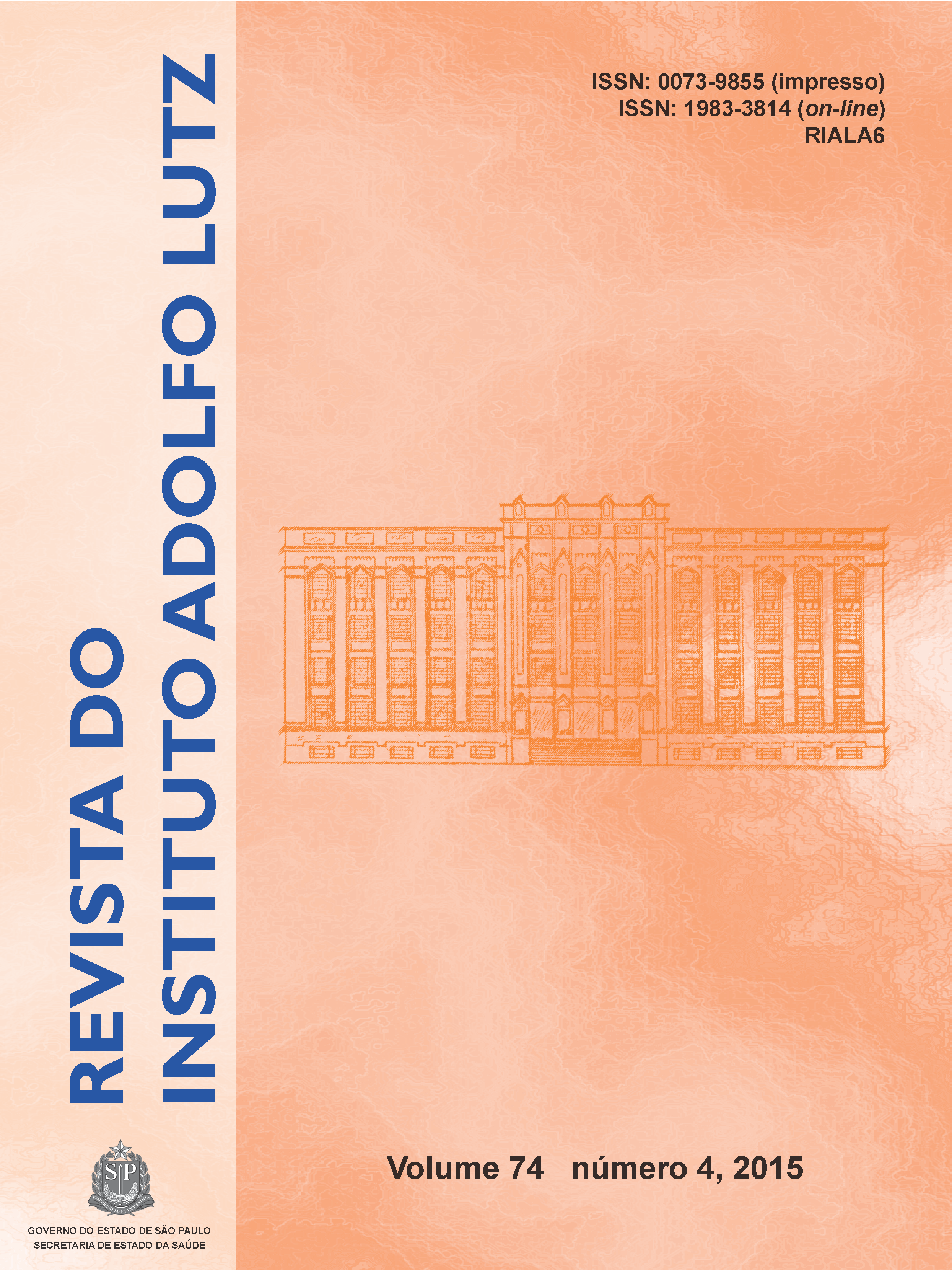Abstract
Sporotrichosis is an implantation or subcutaneous mycosis caused by the dimorphic fungus Sporothrix spp. that infects both humans and animals. Dogs are rarely affected and this microorganism is considered as of low zoonotic potential. The present study reports a case of sporotrichosis in a one year old female Yorkshire Terrier dog, with no history of previous contact with cats. Histopathological and immunohistochemical analyses performed in the sample, collected by means of the lesion biopsy, revealed a nodular dermatitis with intra-lesion Sporothrix spp. The dog was treated with itraconazole (10 mg/kg/day for 120 days). No additional skin lesions were detected, 11 months after starting the treatment. Currently, sporotrichosis has not been included as a disease requiring the mandatory report. However, it is important to instruct the professionals concerning the zoonotic potential of this disease, and on the clinical features which might be very subtle and similar to those found in the most common skin diseases.
References
1. Schechtman RC. Sporotrichosis: Part II. Skinmed. 2010;8(5):275–80.
2. Miranda LH, Quintella LP, Menezes RC, dos Santos IB, Oliveira RVC, Figueiredo FB, et al. Evaluation of immunohistochemistry for the diagnosis of sporotrichosis in dogs. Vet J. 2011;190(3):408–11. [DOI:10.1016/j.tvjl.2010.12.004].
3. Miranda LHM, Quintella LP, dos Santos IB, Menezes RC, Figueiredo FB, Gremião IDF, et al. Histopathology of canine sporotrichosis: A morphological study of 86 cases from Rio de Janeiro (2001-2007). Mycopathologia. 2009;168(2):79–87. [DOI: 10.1007/S11046-009-9198-4].
4. Schubach TMP, Schubach AO, Okamoto T, Barros MBL, Figueiredo FB, Cuzzi T, et al. Canine sporotrichosis in Rio de Janeiro, Brazil: clinical presentation, laboratory diagnosis and therapeutic response in 44 cases (1998–2003). Med Mycol. 2006;44(1):87–92.
5. Madrid IM, Mattei AS, Fernandes CG, de Oliveira Nobre M, Meireles MC. Epidemiological findings and laboratory evaluation of sporotrichosis: a description of 103 cases in cats and dogs in southern Brazil. Mycopathologia. 2012;173(4):265–73. [DOI: 10.1007/s11046-011-9509-4].
6. Larsson CE. Esporotricose. Braz J Vet Res Anim Sci. São Paulo. 2011;48(3):250–9.
7. Lopes JO, Alves SH, Mari CR, Brum LM, Westphalen JB, Altermann MJ, et al. Epidemiologia da esporotricose na região central do Rio Grande do Sul. Rev Soc Bras Med Trop. 1999; 32(5):541-5. [DOI: 10.1590/S0037-86821999000500012].
8. Cruz LCH. Complexo Sporotrhix schenkii. Revisão de parte da literatura e considerações sobre o diagnóstico e a epidemiologia. Vet Zootec. 2013; 20 (Edição Comemorativa): 08-28.
9. Center for Disease Control and Prevention CDC. U.S.A Department of Health & Human Service (acesso 2016 Maio 16). Disponível em: [http://www.cdc.gov/fungal/diseases/sporotrichosis/].
10. Souza NT, Nascimento ACBM, Souza JOT, Santos FCGCA, Castro RB. Esporotricose canina: relato de caso. Arq Bras Med Vet Zootec. 2009; 61(3): 572-6. [DOI:10.1590/SO102.09352009000300008].

This work is licensed under a Creative Commons Attribution 4.0 International License.
Copyright (c) 2016 Instituto Adolfo Lutz Journal
